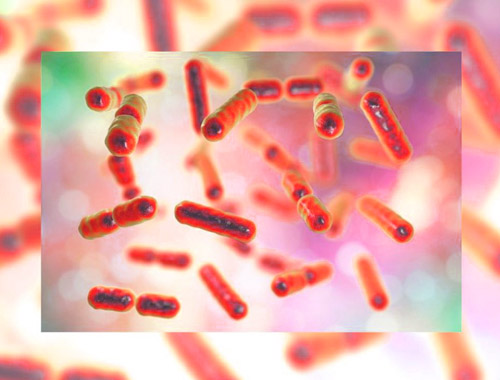Shigella

Published: 18 Jun 2025
ICD9: 004.0 ICD10: A03.0 ICD11: XN7HG
Shigella is a genus of bacteria that causes an infection called shigellosis, also known as bacillary dysentery.
Here's a breakdown:
![]() Bacteria: Shigella are Gram-negative, rod-shaped bacteria. They are closely related to *E. coli*.
Bacteria: Shigella are Gram-negative, rod-shaped bacteria. They are closely related to *E. coli*.
![]() Infection (Shigellosis): Shigellosis is a highly contagious infection of the intestines. It's a leading cause of diarrhea worldwide, especially in developing countries.
Infection (Shigellosis): Shigellosis is a highly contagious infection of the intestines. It's a leading cause of diarrhea worldwide, especially in developing countries.
![]() Symptoms: Common symptoms include:
Symptoms: Common symptoms include:![]()

![]() Diarrhea (often bloody)
Diarrhea (often bloody)![]()

![]() Fever
Fever![]()

![]() Stomach cramps
Stomach cramps![]()

![]() Nausea
Nausea![]()

![]() Vomiting
Vomiting![]()

![]() Tenesmus (a feeling of needing to pass stool even when the bowels are empty)
Tenesmus (a feeling of needing to pass stool even when the bowels are empty)
![]() Transmission: Shigella spreads easily through the fecal-oral route. This means it's typically transmitted when someone ingests even tiny amounts of fecal matter from an infected person. Common modes of transmission include:
Transmission: Shigella spreads easily through the fecal-oral route. This means it's typically transmitted when someone ingests even tiny amounts of fecal matter from an infected person. Common modes of transmission include:![]()

![]() Contaminated food (often from handlers who haven't washed their hands properly)
Contaminated food (often from handlers who haven't washed their hands properly)![]()

![]() Contaminated water (especially in areas with poor sanitation)
Contaminated water (especially in areas with poor sanitation)![]()

![]() Direct contact with an infected person (common in daycare centers, nursing homes, and among household members)
Direct contact with an infected person (common in daycare centers, nursing homes, and among household members)![]()

![]() Sexual contact
Sexual contact![]()

![]() Flies (in some settings)
Flies (in some settings)
![]() Treatment:
Treatment:![]()

![]() Mild cases usually resolve on their own with rest and fluids.
Mild cases usually resolve on their own with rest and fluids.![]()

![]() More severe cases may require antibiotics. However, antibiotic resistance is a growing concern with Shigella.
More severe cases may require antibiotics. However, antibiotic resistance is a growing concern with Shigella.![]()

![]() Rehydration is crucial to prevent dehydration, especially in young children and the elderly.
Rehydration is crucial to prevent dehydration, especially in young children and the elderly.
![]() Prevention: The best way to prevent Shigella infection is through:
Prevention: The best way to prevent Shigella infection is through:![]()

![]() Frequent and thorough handwashing with soap and water, especially after using the toilet, changing diapers, and before preparing or eating food.
Frequent and thorough handwashing with soap and water, especially after using the toilet, changing diapers, and before preparing or eating food.![]()

![]() Safe food handling practices (washing fruits and vegetables, cooking food thoroughly).
Safe food handling practices (washing fruits and vegetables, cooking food thoroughly).![]()

![]() Safe water practices (drinking treated or bottled water, especially when traveling).
Safe water practices (drinking treated or bottled water, especially when traveling).![]()

![]() Proper sanitation and sewage disposal.
Proper sanitation and sewage disposal.![]()

![]() Avoiding swimming in contaminated water.
Avoiding swimming in contaminated water.
In summary, Shigella is a bacterium that causes a highly contagious diarrheal illness. Good hygiene practices are critical to prevent its spread.